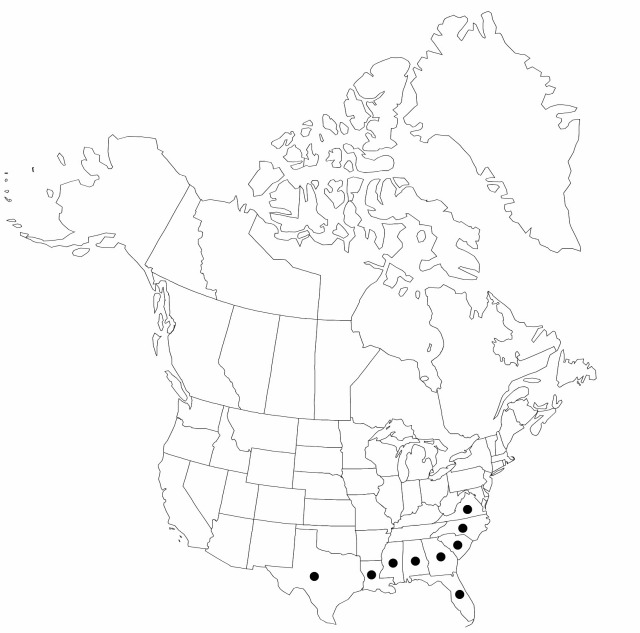Fuirena breviseta
Bull. Torrey Bot. Club 28: 466. 1901.
Herbs perennial, cespitose, 20–50(–100) cm; rhizomes scaly; offshoots cormose. Culms tufted or close together, erect to leaning, smooth except in inflorescence. Leaves: proximal sheaths hispid-hirsute, median smooth, distal progressively shorter, smoother; principal blades toward midculm, linear to lance-linear, flat, 5–15 cm, smooth to sparsely strigose or puberulent, margins proximally or entirely spreading, hispid-ciliate. Inflorescences in clusters of terminal spikelets or from 1–2(–3) penultimate nodes, proximalmost involucral bract exceeding peduncle and cluster, distalmost shorter. Spikelets ovoid to cylindric, 10–15(–20) mm; fertile scales 3–3.5 mm; cusp excurved, length of scale; median ribs 3, strong. Flowers: perianth bristles incurved, mostly shorter than perianth stipe, mostly smooth; perianth blades short-oblong, ± equal to stipes, apex acute, strongly incurved, thickened distally, sometimes apiculate; anthers 3, 1–1.3 mm. Achenes: body trigonous, angles wirelike, faces lustrous brown or red-brown, 1 mm; beak linear, hispidulous at dilated tip. 2n = 46.
Phenology: Fruiting summer–fall.
Habitat: Inner edges of brackish marsh, bogs, wet flatwoods and savannas, ditches
Elevation: 0–200 m
Distribution

Ala., Fla., Ga., La., Miss., N.C., S.C., Tex., Va., West Indies (Cuba).
Discussion
Selected References
None.
